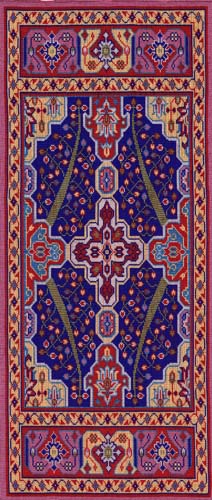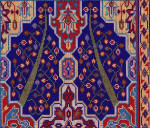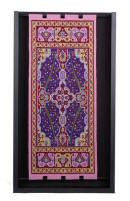 |
Alexandra Zonis Artist's Main Page
|
|||||||||||||||||||
|
Laughing Tree is created in the
Old Persian tradition. Similar designs date back to the sixteenth
century, to the reign of Shah Abbas in northern Persia, and probably to
the rugs woven in the city of Isfahan. Isfahan style rugs often depicted
formal court gardens, trees and flowers, and were composed very
precisely, symmetrically and with a certain formality. The Tree of Life is an important symbol in nearly every culture. With its branches reaching into the sky, and roots deep in the earth, it dwells in three worlds - a link between heaven, the earth, and the underworld, uniting above and below. It is both a feminine symbol, bearing sustenance, and a masculine, visibly phallic symbol - another union. In Jewish and Christian mythology, a tree sits at the center of both the Heavenly and Earthly Edens. The Norse cosmic World Ash, Ygdrassil, has its roots in the underworld while its branches support the house of the Gods. The Egyptian's Holy Sycamore stood on the threshold of life and death, connecting the worlds. The Mayas called it Yaxche, whose branches support the heavens. The modern Christmas tree takes us back to trees decorated to honor Attis, the crucified God of the Greeks and the pagan druid worship of nature in the form of sacred trees. The Laughing Tree tapestry shows
the Tree of Life mirror - imaged four times - the double symmetry, that
represents physical, mental, emotional and spiritual quadrants of the
Universe. As opposed to the heavy and serious symbolism of the legends,
I took a lighter approach to the subject. This tapestry features a rare border within a border design, which is not seen much in more contemporary examples of Isfahan carpets. Alexandra Zonis, March 2008 |

